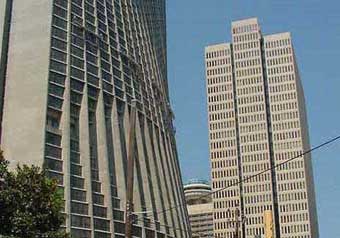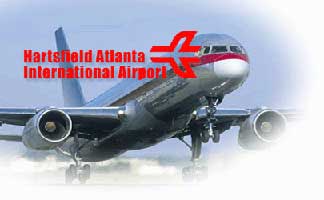What We Keep and Create in the City
by Bonnie Webb and Sarah RobbinsThe "Building Cities" theme of the Keeping and Creating American Communities project examines the culture of cities by studying what they elect to establish and preserve. All cities house collections, have landmarks, and design spaces for work and play. All cities create monuments that support, preserve, and protect their shared vision. "Building Cities," then, asks what we can learn about a city by exploring what it chooses to keep, and how.
Frederick Allen's Atlanta Rising chronicles what he calls "the invention" of Atlanta. By using the term "invention" as part of his subtitle, Allen signaled an understanding that members of the this urbancommunity, in the time between the close of World War II and the close of the century, tried self-consciously to "invent" a new identity for their city. In numerous collaborative ventures, citizens worked to change Atlanta from a relatively undistinguished regional metropolitan area to an all-American city. Most recently, Atlanta has sought to become an international center still proud of its southern roots.
Every city has its own story to tell. But many of the factors that reshaped Atlanta in the second half of the twentieth century were probably also important to other urban communities across the U.S. Decisions about what transportation systems to build, for example, influence the pace, feel, and reach of a city. By following Mayor Hartsfield's dream of building the busiest airport in the world, Atlanta made choices of enormous significance. Corporations like UPS and the Southern Company, often cite the airport as a reason for locating their headquarters here, for instance.
While Hartsfield's "port of the sky" has been an engine of growth, the resistance that some Atlanta suburbs mounted against proposals to extend the MARTA rail system into their areas has contributed to the metro's now-infamous traffic jams.Those very traffic patterns have recently promoted some reversals of the previous pattern of city dwellers moving to the suburbs. Growing numbers of metro residents are relocating back "closer in," leading to the re-gentrification of some neighborhoods rich in local history (e.g., Cabbagetown). At the same time, Atlanta's boosters have been renovating some of the city's favorite, familiar public spaces-from the Woodruff Arts Center to the Atlanta Zoo
and the Fox Theater.
They've also been building new landmarks-from the Olympic stadium that became the Braves' home of Turner Field, to Phillips Arena near the Olympic park, to the CNN headquarters built where a failed indoor theme park once stood.
Now, just on the horizon, we might ask what Atlantans will be saying about themselves and their city through the leadership and largesse of The Home Depot's original founding partners. One is spearheading the drive for a new symphony hall. The other plans to create an enormous, unique legacy by building the largest aquarium ever established in the United States. Following in the footsteps of the unobtrusive Coca Cola magnate Robert Woodruff and the colorful Ted Turner, these community leaders invite us to dream big. Can we follow their lead while hanging on to the equally important values represented in some of Atlanta's other landmarks, like the Carter Center and the Martin Luther King Center? What role can and should the city's less powerful citizens play in building its future? These are the kinds of questions teachers and students exploring KCAC's Building Cities theme must continue to ask.
Martin Luther King Center Virtual Tour a PowerPoint presentation (PowerPoint viewer required for viewing)
by Bonnie Webb's Garrett Middle School Students
Literary Responses to the King Center
by Garrett Middle School Students
The Lost World of Sid and Marty Krofft brief overview with a pdf document (Acrobat Reader needed for viewing)
by Dave Winter's Wheeler High School Students
The Varsitya PowerPoint presentation (PowerPoint viewer required for viewing)
by Sarah Breede and Roslyn Sue Smith, KSU Honors students

Content Design/Management:Traci Blanchard and Marty Lamers
Home | Curricular
Program | Thematic Content
Classroom Resources
| Community Projects |
Who We Are
© 2000-2001KCAC
No materials on this website should be copied or distributed
(except for classroom use) without written permissions from KCAC.
Questions? Comments? Contact KSU webmaster
Jim Cope.


